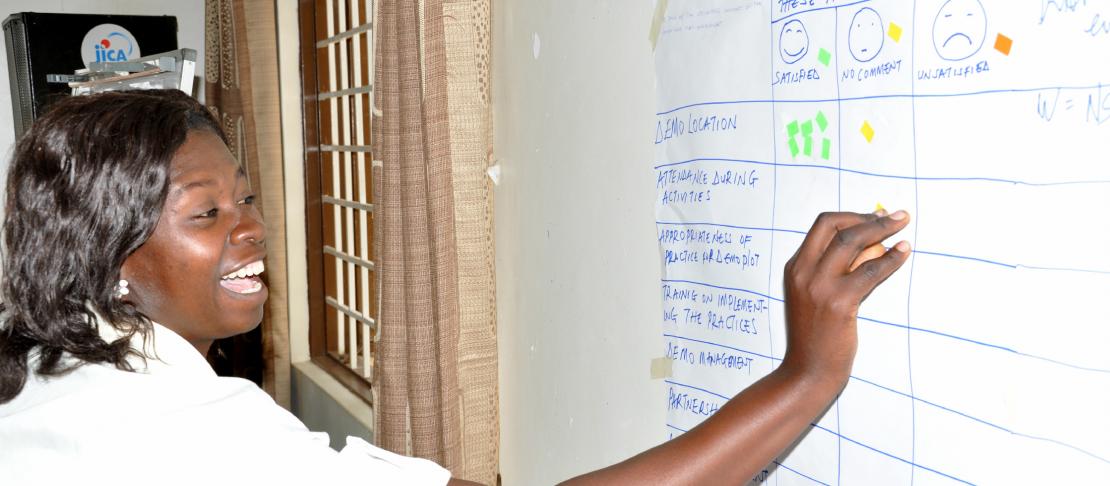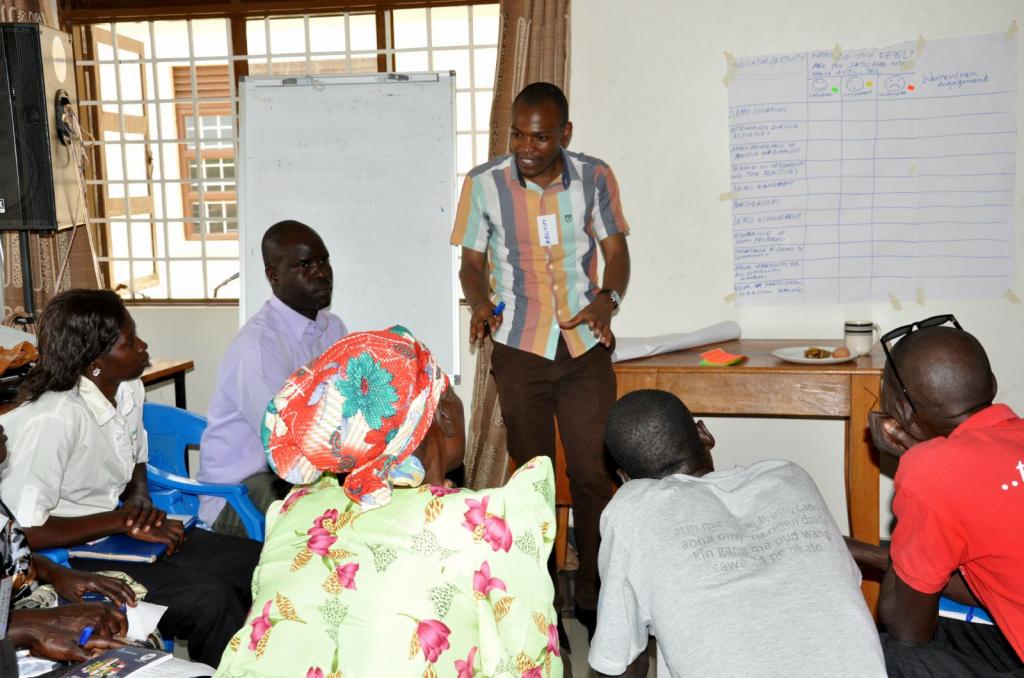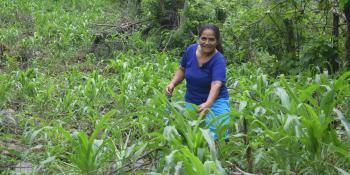Outscaling climate-smart agriculture practices through farmer-driven demonstration plots

Researchers and farmers meet; evaluate locally suitable climate-smart agriculture technologies and practices.
The International Institute for Tropical Agriculture (IITA) in partnership with the International Centre for Tropical Agriculture (CIAT) organized a farmer’s reflection workshop on 2nd February 2016 in Nwoya district Uganda. The aim of the meeting was to allow farmers share cross-site experiences, obtain feedback on demonstration plots implementation and performance, and inform planning for the subsequent seasons.
On-farm demonstrations facilitate out scaling of locally appropriate climate-smart agriculture (CSA) practices among farmers through “learning by doing”. It also helps to capture information about preferred CSA practices, since farmers suggest their own training content. The interplay between local perceptions and scientific analysis will permit promotion of locally appropriate CSA technologies. This is the goal of this CIAT led project, “Increasing food security and farming systems resilience in East Africa through wide scale adoption of climate-smart agricultural practices”.
In the first reflection activity, farmers were divided into groups based on the location of the demonstration plots, and they were asked to evaluate the demonstration plots based on a number of indicators: location of the demonstration plot, attendance during activities, and appropriateness of practices for demonstration plots. Others included: training on implementing the services, management of the demonstration plots, partnerships, involvement in the demonstration, monitoring of the plots, and importance of the demonstration plots to the community, equal opportunity for all community members and equal participation in decision making.
Farmers were then asked to indicate their level of satisfaction of the demonstration plots by placing an appropriate symbol against the indicator used to assess progress on a chart: (1=Satisfied, 2=No comment and 3=Dissatisfied). The reason for their selection was discussed.
Discussions were also held on what was going on well for each indicator and what needed to be improved and why. Farmers were then asked whether there were any particular aspects of the demonstration plots that they wanted changed and how such changes could be made.

Farmers engaging in group discussions on locally appropriate climate-smart agriculture (CSA) practices. Photo: J. Okiror (IITA).
Challenges and Key Lessons in testing the Approach
The location of demonstration plots was a major barrier to participation, especially in Anaka sub-county where farmers cited poor attendance due to long distances. In Koch Goma sub-county, some members send children, while others attend for reasons such as the refreshments provided. Farmers also cited theft of crops, stray animals, pest and disease infestation, and time as barriers to demonstration plots success.
However, farmers were pleased with the training, which they said was helpful, and the decision making, because the facilitator involved them in selecting the training content. As a result, they had learnt new practices and gained skills on how to manage the demonstration plots.
Farmers ranked the following CSA practices: improved varieties, row planting, minimum tillage, mulching, and intercropping. Improved varieties are high yielding, early maturing, disease tolerant, and marketable. Row planting is good for spacing, requires less seeds, and makes it easy to weed, harvest, and control pests and diseases. Minimum tillage reduces costs, kills weeds, and saves time, in addition to requiring little skills, retaining soil nutrients and reducing erosion.
The reflection activity evaluated demonstration plot implementation and performance to inform planning for subsequent seasons, and provided opportunity for farmers to share cross-site experiences. Locally appropriate CSA practices for Nwoya district were prioritized last year in a participatory research, which brought together researchers, agriculture experts, and farmers from diverse agro-ecological zones. Demonstration plots were then designed to assess trade-offs between and within practices as well as impacts of CSA practices on important indicators identified by farmers. All this was done to identify perceived benefits and barriers to adoption of CSA practices by small-scale farmers.
Farmers consider their knowledge and skills in making decisions about whether or not to undertake a specific CSA practice. An important step in the adoption process is knowledge of practice, which might not necessarily translate into actual uptake, a study conducted by CIAT in Northern Uganda and Southern Agricultural Growth Corridor of Tanzania (SAGCOT) reveals. Farmers use indictors like yield, income, labor, cost, time, farm size, equipment, and inputs to prioritize CSA practices.
This project is funded by International Fund for Agricultural Development (IFAD), and co-implemented in Uganda by the International Institute of Tropical Agriculture (IITA). It applied the Climate Smart Agriculture Rapid Appraisal (CSA-RA) tool to prioritize CSA practices with stakeholders in Nwoya district. In August 2015, five on-farm demonstrations were set up in four sub-counties to build on these efforts.
Update provided by PACCA's Communication Intern John Francis Okiror based at the International Institute for Tropical Agriculture in Uganda.



